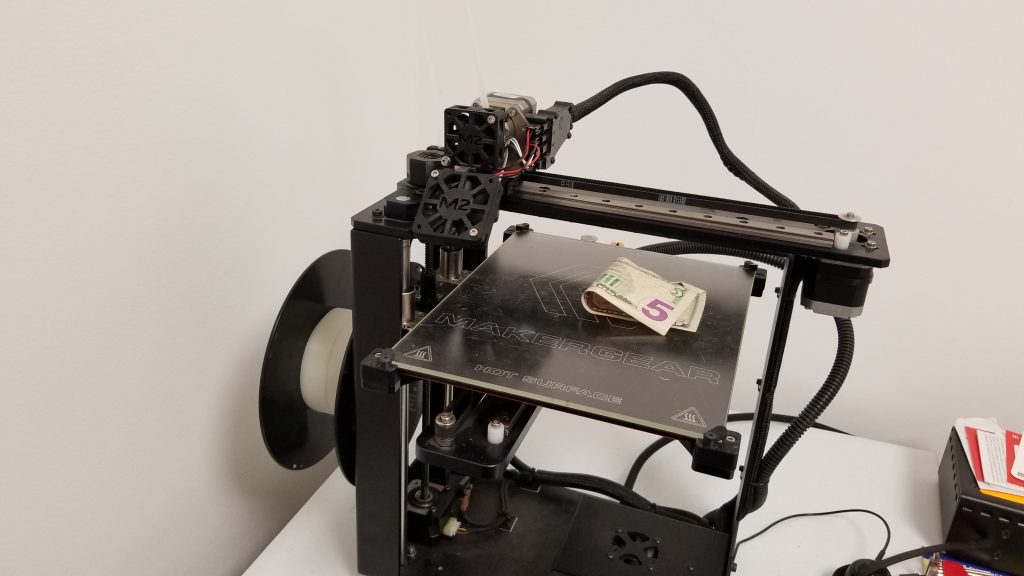How to Invent Something: 4 Major Steps
Learn how to invent something big enough and you could change the world. If that sounds too daunting, remember this: everything you own was invented by some regular person at some point.
Updated 3.9.2022
While it may have been too expensive for you to build a product on your own before, more widely accessible resources have made it possible to make practically anything at home.
In this article, we will be going over the steps for how to invent something and how to arrive at a working prototype without going deep into debt.
Have An Idea for how to invent something
The good news is that pretty much everyone has ideas. If you can’t come up with one on your own, someone can probably share one with you.
If you do get an idea from someone else (especially a friend, relative, etc.) make sure that both of you are on the same page about your intention for an invention.
Feelings can easily be hurt if you start a business with an idea that a friend mentions off-hand and they aren’t financially involved. More on that later.
Focus On Problems
The best products offer an immediate solution to a pressing problem. That’s why a lot of big companies call their products “solutions” in the B2B space. In the best-case scenario, you are first to the market and the only one with a solution to a problem.
At least a few people will probably keep buying a product regardless of economic conditions if it makes their life significantly easier, too. Demand for non-essential products will go away pretty quickly if we end up in a depression or recession.
Look Everywhere
Leave no stone unturned and eventually, you will stumble on a million-dollar idea. Researching product trends and general industry statistics can be a good place to start.
That was a big reason Jeff Bezos started Amazon. He saw how fast the internet was growing and had already wanted to quit his job to start his own thing. The rest is history.
Accidental Inventions
You should train your brain to get better with noticing product opportunities at random. A handful of products throughout history have been invented either completely by accident or during the development process of something else.
Take the Slinky, for example. Mechanical engineer Richard James was trying to design a device for securing cargo on Navy ships when he dropped some coil wires on the ground.
The wires did what modern Slinky’s do and tumbled across the floor. James thought that it looked like a fun toy and since then, over 250 million units have been sold.
Don’t Reinvent The Wheel
One of the most unsung benefits of having online product reviews isn’t just knowing which to avoid or buy. It’s knowing which ones can be designed better.
While not all reviews will go in-depth enough for you to find out ways to re-engineer a product, plenty get specific about flaws that they wish could be fixed.
If you do enough scouring through product reviews on Amazon, you can definitely find opportunities without having to invent something from scratch. The best-case scenario is finding a flawed product that’s only available from 3rd party sellers and no company actually owns patents on it.
My Experience
The reason I suggest re-engineering products from Amazon is because I’ve done it. My umbrella holder project isn’t ready for market yet, but, I do have a prototype that could probably go to production.
Some minor safety concerns are keeping it in the R & D phase for now – but it is easier to use and definitely safer than the only options currently available. I started working on it by following the steps outlined above.
A Brief Story On That
Originally, I was talking to my grandma on the phone and said that I wanted to start a food business. Then, she told me about a business idea that she had for a product.
There was a problem that kept coming up (for about 40 years straight) and she said she would have invented the solution by then if she knew how. Initially, I did a quick Google search and saw that it looked like someone had already released a product that solved it. Shoot.
How to Invent Something: Digging Deeper
At first, it looked like the market was saturated with products that solved her (and many others’) problem. However, once I started looking closer, I noticed a few key things.
The first was that every design was the exact same or close. Across Amazon, Walmart, and anywhere else I could find this thing, it was always the same design and always sold by 3rd party sellers.
After looking high and low, no company could be found to credit with the actual design or a patent.
The Problems and Patents
More importantly, the reviews everywhere were negative and many were very specific about the issues. Some reviewers even mentioned how they modified the product themselves to actually work!
Along with that, I also found a ton of expired patents for different designs that served the same purpose. People have been patenting solutions to this problem since the 1800s! No one has brought one all the way to the market yet (not during the internet age, at least).
The Solution
The idea for my design to invent a product came completely out of left field. I didn’t just look at the bad versions and have a light bulb go off. That’s why it’s crucial for you to look everywhere and always keep your eyes open.
My biggest breakthrough actually came about four or five months after I had done my research on the flawed designs.
I was underneath my 1998 Ford F-150 fixing a gas leak and BOOM! I saw the answer in the design of a very rusty car part. The gas leak also got fixed and I got out unscathed.

Motivation for how to invent something
I’m not saying inspiration will suddenly strike and magically take you through all the hard parts, either. There have been plenty of times where I have listened to different motivational speeches to pull me through a few hours of work on the weekend, early, late – whenever.
The nice thing is how plenty of those speeches are free now. Searching “motivation” on YouTube pulls hundreds of high-quality and highly motivational videos for you to draw extra mental power.
That brings us to the next major step with inventing a physical product: drawing out your design.
How To Invent Something: Draw It Out
Many people throughout history regarded as “geniuses” were known to carry notebooks around. More recently, people like Richard Branson, Larry David, and many others carry notebooks around regularly. You can use the notebook strategy for a lot of things, especially inventing.
Once you formulate a product idea, start to draw a basic outline of what you think it should look like. Don’t worry if you aren’t talented at drawing!
The Tools
A basic 12-inch ruler and a compass are fine for you to start with. A compass is a tool used for drawing circles, in case you don’t remember those from geometry class.
Another measuring tool you will eventually want is a “caliper.” After exceeding the distance that my dad’s small antique caliper could handle, I made an investment in a digital one.
I highly recommend that for getting precise measurements to use later when you start using CAD software.
How To Invent Something: The Patent Search
Before you invest too much time into drawing and coming up with a design, do a basic patent search. Go to Google Patents and search for descriptions of your idea to make sure someone didn’t already come up with it.
Even if they did, don’t let that discourage you from trying to invent a product.
Once you get to the point of actually wanting to market it, hire a patent attorney to perform a professional search. The last thing you want is to end up in a patent lawsuit because you missed something when you skimmed through Google at the beginning of your project.
Computer-Aided Design for how to invent something
Computer-Aided Design, or CAD for short, is the key to how you can invent your own product without mortgaging your house. That and your brain. You need both.
Since the mid-’90s, CAD software has been widely available for personal computers. In the last few years, some enterprise-grade software has even become free for entrepreneurs to use until their businesses earn a certain threshold of revenue.
As simple as it sounds, there are only three major functions found in most CAD programs that you need to understand to get started.
Sketch
Think of a sketch as digitizing your drawing. You take what you have drawn out in your notebook or notepad and move it on to the computer. This lays the building blocks to invent a product on-screen.
All you need to do is click and drag or enter the dimensions for all the lines, circles, and other facets of the drawing.
There are tons of helpful tutorials on YouTube to learn the basics in under 10 minutes.
Extruding
Once you figure out the correct sketch, it’s time to actually make your product come to life on-screen.
This is done by “extruding” some or all of your sketch, depending on its complexity. This means that you create a three-dimensional object out of it.
Typically, you will click and highlight the area of your sketch you want to make 3D, select “extrude” and choose the distance.
Exporting
After you arrive at a virtual object that you want to hold in your hand, it’s time to “export” it. This process converts the file type to “.STL” format so you can 3D-print it or send it to someone else for 3D-printing.
The file will still need to be opened in 3D-printer software and converted again to “G-code,” the actual machine language 3D printers use. There are a few free options out there for that, too.
CAD Software To Consider Using
If you tried inventing something in the ’90s like Shark Tank personality Lori Greiner, it would have cost you over $10,000. The following software is free to use and can get you off the ground.
- Fusion 360 by Autodesk
- This is free as long as your business earns less than $1000 annually. You can apply for a “startup” license once past that point and continue to use it for free up to $100,000 in annual revenue.
- It’s been my go-to software for nearly 5 years!
- SolveSpace
- Completely free and open-source CAD software
- DesignSpark Mechanical
- DesignSpark not only offers free CAD software but free electrical engineering and circuit board design software as well. If you have an idea for a consumer electronics project, they are a one-stop-shop for building everything. On top of that, there is a massive community of engineers around the world involved with it.
What I Use
Personally, I have been using Fusion 360 for a while since it meets my needs and the tutorials are great. Plus, since my plan is to eventually sell products and actually build a business, I would prefer to be paying for a premium engineering software when that day comes.
I have had my run with trying to rely on things that seem completely “free” and always end up paying in the form of issues or problems later on.
Once you find CAD software that’s a good fit and design the first version of your product, it’s time to find a 3D-printer.
3D-Printing
If you aren’t familiar at all with 3D-printing, it’s been a growing technology in the prototyping space during the last few years. Most 3D-printers are pretty simple.
They have three or four motors, a platform for building things, and something called an “extruder” that heats up plastic to push it out on to the platform.
The motors move in coordination with each other as the plastic is extruded to build designs on the platform layer-by-layer.

Costs
The costs of 3D-printing a prototype can be very low. Depending on how you do it, though. If you are a college student and your school has a MakerSpace with 3D-printers, go there first.
When I was a senior in college, they had just built one in our student center. I was able to avoid spending any money at all until I had a functional prototype and the confidence from that to actually invest in my own printer.
Public Makerspaces
There are also many public Makerspaces around the United States. You can find one near you with a directory like this one on Make: Community.
These typically have a low monthly fee and all the resources you need to fabricate a prototype.
If you do choose to go and use a public space, don’t forget that there will also be other people there trying to invent products and probably make money online as entrepreneurs. Be cautious about sharing too much of your idea and the problems it might solve.
Buying Your Own
If it makes you too nervous to go and create your prototype in a public place, you can always make the investment in a printer from the beginning. At the very least, make sure the CAD design in your software looks like the one you need before spending $400+ on a printer to make it.
The prices range significantly for these machines, too. You can find a decent one by searching on Google for “best value 3D printers” and researching 3D-printing blogs, Reddit, and any other places where enthusiasts share recommendations.
For a really sturdy high-quality one, prepare to spend around $1000-$2000. There’s even ones out there that get into the $4,000-$5,000 range.
How To Invent Something: The Software
In order to get an actual printed object from a printer with your CAD file, you need two things. You need software that can both convert the .STL file to G-Code and control the printer or two separate programs to do each task. There are some free options out there for that, too.
- Cura Slicer
- This is a great free slicer software from the company Ultimaker. Many use this to successfully prepare their files for 3D-printing and also control their printer to turn the CAD model into a tangle product.
- Simplify3D
- Simplify3D isn’t free, but, it is a worthwhile investment. The software both prepares files for printing and controls many different 3D printers out there. I have been using this with my printer for about two years.
- Slic3r
- Pronounced “Slic3r,” this free software will convert your CAD file to G-Code and then it can be sent to the printer. This software does not control 3D printers, though. I used this for a while when I first got into 3D-printing and it’s pretty easy to use. If you use Slic3r, you will also need software to control the printer.
- Repetier
- Repetier is a great free option for controlling your 3D printing and starting prints after preparing them with software like Slic3r.
Whichever software you choose, it will take a little bit of time to learn the basics. Fortunately for you, tons of people have already mastered them and made tutorials and YouTube videos like with the CAD software.
How To Invent Something: Tying It All Together
Today, the barrier for entry into entrepreneurship is lower than ever. You don’t need to take half as much risk to invent a product as someone would have 20+ years ago.
It’s time to take those ideas that have been stuck in your head for 10 years and go make someone else’s life better with them.
You can do it by brainstorming, keeping a journal, leveraging open-source or free software, and learning the basics of 3D-printing. If you start today, you’ll invent the next big thing sooner than you think!
